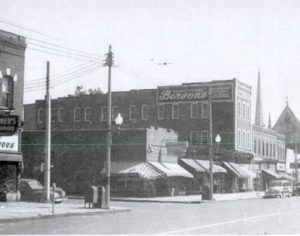What Are Historic Districts?

Norfolk has twelve historic districts (5 of them are designated locally) and Chesapeake has ten nationally registered historic districts, which makes them two of the richest American towns in historic buildings. But what are historic districts? And what does it imply to be the owner of a building or home inside these special zones?
A historic district is a group of buildings or sites that have historical or architectural significance and can be national and/or local. Not every building of the district must be significant, as there is a clear distinction between contributing and non-contributing buildings. The latter are just new constructions that have been included within a district, but which has no historic significance or relevance.
Who can nominate an historic district? The designation of an area as a national historic district is made by the federal government through the department of interior through a complex procedure to evaluate the historical significance of the zone concerned. The procedure is quite complex and involves some bodies of the state of Virginia as well. Local historic districts are set up by city councils with the possible collaboration of the state of Virginia through its Certified Local Government (CLG) Program.
Does it imply limitations or burdens on the owners? In general, the designation of a zone as historic district is honorific and does not limit the rights of the owners in any way. Therefore, you are under no obligation to open your building to the public, and you can sell it as you please. However, if a district is designated as local historic district (locally significant), it is automatically placed under local zoning ordinances which almost always set limitations on building alterations. Typically, the limitations are limited to the exterior of the structure- like the windows, siding, fencing, and woodwork.
This is exactly the case of Norfolk and Chesapeake local historic districts. All exterior alterations, new constructions and demolitions must be approved by the Architectural Review Board and the Planning Commission that release a Certificate of Appropriateness (COA) to the applicant. COA is not requested for ordinary maintenance, since it does not alter the construction. However, non-contributing buildings are also subject to local ordinances because their alterations could affect the historic features of the zone as a whole. Therefore, any alteration or demolition of any non-contributing construction in the district area also requires a COA.
Alterations are all those changes that alter significantly the building, like new additions, hardened surfaces, porch demolitions, new decks, changes of colors and materials. You can find detailed explanations on the guidelines on the matter that have been published by the city councils of the two towns.
Link to further information from Norfolk: https://www.norfolk.gov/index.aspx?NID=1028
Link to further information from Chesapeake: http://www.cityofchesapeake.net/government/Boards-Commissions/full-listing/Historic-Preservation-Commission.htm
One advantage of owning in an historic district – local or national – is a special tax credit on their state or federal income taxes for restoration work done to the property. In particular, owners of buildings placed in a national historic district are entitled to a 20% -25% of the cost of rehabilitation of the building. For local historic districts, certain rehabilitation projects may qualify for the City property abatement program that allows owners to forgo paying full property taxes for 15 years in Norfolk.
Every Local historic district is not necessarily a national historic district. In Norfolk, there are four local districts: Ghent, West Freemason, East Freemason, and Downtown. Apart from East Freemason, they are also national historic districts.
In Chesapeake, there is only one local historic district, South Norfolk that is also registered as national historic district as well.
There are historic districts in the surrounding cities also! Some cities have special funding and/or loan programs available to help pay for renovations.
Photo was taken about 1949 in downtown Portsmouth, Virginia. Source: Portsmouth public library
